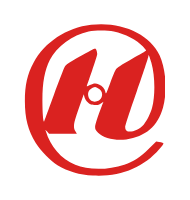Technical Resources
Classification and Mutual Differences in Applications of 6Mo Steel
Applied Forms : plate,Bar,Pipe,Forgings,Flanges,Fittings
Materials involved : Alloy 926,UNS N08926,UNS N08367,AL-6XN
There are several types of super austenitic stainless steel, also called six-molybdenum alloy steel, on the market. Their chemical composition is basically the same, containing approximately 20% chromium, 6.0% molybdenum and 0.20% nitrogen. Typical steel grades of this type of super austenitic stainless steel are: 254SMO/S31254, Cronifer 1925hMo (1.4529, N08926) and AL-6XN (N08367), etc. Today, HLOEM will share the similarities and differences between the three types of super stainless steel, and explain the material upgrades of various foreign steel plants within the scope of understanding.
1. Development of super stainless steel
In the current American standard (ASTM), three types of super austenitic stainless steel can be found, see Table 1. Among them, only 254SMO is specifically developed to improve the material’s resistance to pitting corrosion and crevice corrosion while ensuring the weldability of thick plates. At the end of 1978, 254SMO was invented by the AVESTA factory under OUTOKUMPU in Sweden and began mass commercial production. It is used in parts with harsh corrosive environments in different industries.
AL-6XN (N08367) is developed on the basis of its original steel grade. The prototype contains approximately 20% chromium and 6.0% molybdenum, but no nitrogen. Due to the lack of nitrogen, only thinner steel strips and thin-walled heat exchanger tubes can be produced, otherwise σ phase will precipitate, resulting in a decrease in toughness and corrosion resistance. An improved version containing 0.20% nitrogen was introduced to the market in the early 1980s.
1.4529 (N08926) is an improved model of the old steel type 904L by adding nitrogen. The initial model also had lower nitrogen content. It was not until the mid-1980s that current models with a nitrogen content of 0.20% began to mature.
2. Implement standards
Although all three steel grades are included in the new version of the American standard (ASTM A240), only 254SMO and N08926 are included in the newly implemented and agreed European standard (EN), while N08367 is not, see Table 1. Research shows that chromium, molybdenum and nitrogen play a decisive role in improving the corrosion resistance of stainless steel. Table 1 gives the contents of these elements in three super austenitic stainless steels. Their functions can be reflected by the following formula. The larger the PRE value, the higher the corrosion resistance.
1.4529 is characterized by:
increased resistance to stress corrosion cracking compared to other austenitic stainless steels
excellent general corrosion resistance in use of oxidizing as well as reducing media
less tendency to form intermetallic phases compared to similar steels with only 18% nickel content
very good resistance at pitting and crevice corrosion
Approval for pressure vessels with temperatures between -196 and 400 ° C
Building construction approval for components and fasteners made of stainless steel, German Institute of Structural Engineering, September ’98
The material Alloy 6XN (UNS N08367) was developed in the USA. This has an almost identical composition and is used in the same applications. However, this material is not listed in the VdTÜV sheet and does not have its own Werkstoffnummer. An use in European pressure applications is therefore difficult.
The almost identical material is once used in Europe as 1.4529 and in the USA as UNS N08367. At Hempel, we have therefore stocked the material with double certification so that it can be used internationally.
Main fields of application of alloy 926
1.4529 is mainly in following applications:
Concentration and crystallization plants for salt production by evaporation
Condenser pipes and pipeline systems in power plants with highly polluted cooling water
Pump rods for oil delivery systems
Evaporators, heat exchangers, tank linings etc. and phosphoric acid production
Tanks for transport of aggressive chemical products
Distribution systems and coolers for sulfuric acid plants
Fire extinguishing systems, seawater filtration, hydraulic and injection systems of offshore technology
Flexible pipes in the offshore industry
Flue gas desulphurisation plants (FGD)
Hot forming
The material is hot formed within a temperature range of 1200 and 900 ° C and afterwards quenched rapidly in water or air.
The annealing takes place at 1200 ° C.
After hot forming, heat treatment for optimum corrosion resistance is recommended.
